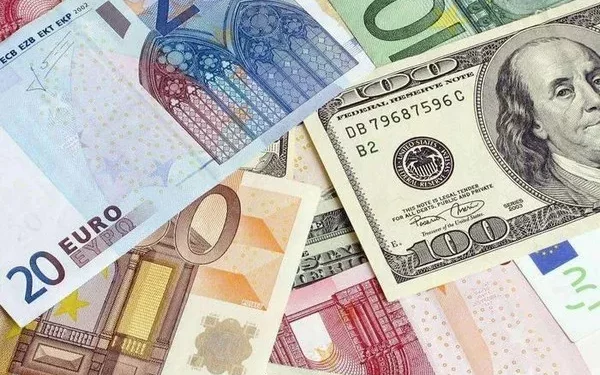The European Central Bank (ECB) reference rate is a critical tool used by the ECB to implement monetary policy within the Eurozone. As the main interest rate set by the ECB, it influences various economic activities, including lending, borrowing, inflation, and economic growth. This comprehensive article delves into the intricacies of the ECB reference rate, its purpose, how it is determined, and its broader implications for the Eurozone and global economies.
The Role of the ECB
Before exploring the ECB reference rate in detail, it’s essential to understand the role of the European Central Bank. Established in 1998, the ECB is responsible for managing the euro, the single currency shared by 19 of the 27 European Union (EU) member countries. The ECB’s primary objectives are to maintain price stability, support economic growth, and ensure financial stability within the Eurozone.
Key Responsibilities of the ECB
Monetary Policy: The ECB sets and implements monetary policy to achieve price stability, primarily by controlling inflation.
Banking Supervision: Through the Single Supervisory Mechanism (SSM), the ECB oversees significant banks within the Eurozone to ensure their stability and compliance with regulations.
Financial Stability: The ECB monitors and addresses risks to the financial system to prevent crises and maintain confidence in the euro.
Understanding the ECB Reference Rate
The ECB reference rate, also known as the main refinancing rate, is the interest rate at which commercial banks can borrow funds from the ECB against collateral on a weekly basis. This rate serves as a benchmark for other interest rates in the economy, influencing the cost of borrowing and lending for households, businesses, and financial institutions.
Types of ECB Interest Rates
The ECB uses three main types of interest rates to conduct monetary policy:
Main Refinancing Operations (MRO) Rate: This is the primary reference rate and the focus of our discussion. It is the rate at which banks can borrow money from the ECB for one week.
Deposit Facility Rate: This is the rate at which banks can deposit excess funds with the ECB overnight. It serves as a floor for the money market interest rates.
Marginal Lending Facility Rate: This is the rate at which banks can borrow funds from the ECB overnight if they need additional liquidity. It acts as a ceiling for money market rates.
Importance of the Main Refinancing Rate
The main refinancing rate is crucial because it directly influences short-term interest rates in the Eurozone. By adjusting this rate, the ECB can control the money supply, influence inflation, and guide economic growth. Changes in the main refinancing rate have a ripple effect on various economic activities, from consumer spending to business investments.
Determining the ECB Reference Rate
The process of setting the ECB reference rate involves careful analysis and decision-making by the ECB’s Governing Council. This council, comprising the six members of the ECB’s Executive Board and the governors of the national central banks of the Eurozone countries, meets regularly to assess economic conditions and make policy decisions.
Factors Influencing the Reference Rate
Several key factors influence the ECB’s decision on the reference rate:
Inflation: The ECB aims to keep inflation close to, but below, 2% over the medium term. The reference rate is adjusted to control inflationary pressures.
Economic Growth: The ECB monitors economic indicators such as GDP growth, employment rates, and consumer spending to gauge the health of the economy.
Financial Stability: The ECB considers risks to financial stability, including banking sector health and systemic risks.
Global Economic Conditions: External factors such as global economic trends, exchange rates, and trade dynamics also play a role in the ECB’s decision-making process.
Decision-Making Process
The decision-making process for setting the reference rate involves the following steps:
Economic Analysis: The ECB’s staff conducts a thorough analysis of economic and financial conditions, including inflation forecasts, economic growth projections, and financial stability assessments.
Governing Council Meetings: The Governing Council meets every six weeks to review the economic analysis and discuss policy options. These meetings are followed by a press conference where the ECB President explains the decisions and provides insights into the ECB’s outlook.
Rate Announcement: Based on the analysis and discussions, the Governing Council decides on the appropriate level for the reference rate. The decision is announced publicly, along with a rationale for the decision.
Implications of Changes in the ECB Reference Rate
Changes in the ECB reference rate have far-reaching implications for the Eurozone economy and beyond. Understanding these implications helps to grasp the importance of the reference rate in monetary policy and economic management.
Impact on Borrowing and Lending
One of the primary effects of a change in the reference rate is on borrowing and lending costs. When the ECB lowers the reference rate:
Borrowing Costs Decrease: Lower interest rates make borrowing cheaper for businesses and households. This can stimulate investment and consumption, leading to economic growth.
Lending Rates Drop: Banks typically lower their lending rates, making loans more affordable. This can boost credit growth and support economic activity.
Conversely, when the ECB raises the reference rate:
Borrowing Costs Increase: Higher interest rates make borrowing more expensive, which can reduce investment and consumer spending, potentially slowing down economic growth.
Lending Rates Rise: Banks increase their lending rates, making loans more costly and potentially dampening credit growth.
Influence on Inflation
Controlling inflation is a primary objective of the ECB. The reference rate plays a crucial role in managing inflationary pressures:
Lowering the Rate: When the ECB lowers the reference rate, it aims to increase the money supply, encourage spending, and boost economic activity, which can help raise inflation towards the target level.
Raising the Rate: Increasing the reference rate helps to reduce the money supply, curtail spending, and slow down economic activity, which can help bring down inflation if it is above the target level.
Effects on Exchange Rates
Changes in the reference rate can also influence exchange rates, impacting the Eurozone’s international trade and investment flows:
Lowering the Rate: A lower reference rate can lead to a depreciation of the euro, making Eurozone exports cheaper and more competitive on the global market. This can boost export-led growth.
Raising the Rate: A higher reference rate can lead to an appreciation of the euro, making imports cheaper but potentially reducing export competitiveness.
See Also: How Does the EU Banking System Work?
Impact on Financial Markets
The reference rate is a critical determinant of financial market conditions:
Bond Markets: Changes in the reference rate influence government and corporate bond yields. Lower rates typically lead to lower yields, while higher rates result in higher yields.
Stock Markets: Equity markets can react to changes in the reference rate, with lower rates often leading to higher stock prices due to cheaper borrowing costs and higher corporate profits.
Banking Sector: The profitability and stability of banks are affected by changes in the reference rate. Lower rates can squeeze banks’ interest margins, while higher rates can improve them.
Historical Trends and Recent Developments
Analyzing historical trends and recent developments in the ECB reference rate provides valuable insights into the ECB’s monetary policy approach and its response to economic conditions.
Historical Trends
2000s: In the early 2000s, the ECB’s main refinancing rate was relatively stable, reflecting a period of moderate economic growth and inflation.
Global Financial Crisis (2008-2009): The ECB sharply reduced the reference rate to support the economy during the financial crisis, bringing it down to historically low levels.
European Sovereign Debt Crisis (2010-2012): The ECB continued to keep rates low and implemented unconventional monetary policies to stabilize the Eurozone economy.
2015-2019: The ECB maintained ultra-low rates and introduced a negative deposit facility rate to combat low inflation and stimulate growth.
Recent Developments
COVID-19 Pandemic (2020-2021): In response to the economic impact of the pandemic, the ECB further reduced rates and introduced extensive asset purchase programs to support the economy.
Inflation Surge (2022-2023): With rising inflationary pressures, the ECB began signaling potential rate hikes to manage inflation expectations and ensure price stability.
Current Rate (2024): As of 2024, the ECB reference rate reflects a balance between supporting economic recovery and addressing inflation risks, with ongoing assessments to adapt to changing economic conditions.
Conclusion
The ECB reference rate is a pivotal element of the European Central Bank’s monetary policy framework. By adjusting this rate, the ECB influences borrowing and lending costs, inflation, exchange rates, and financial market conditions within the Eurozone. Understanding the ECB reference rate and its implications is crucial for comprehending the broader economic environment and the ECB’s role in maintaining price stability and supporting economic growth. As the Eurozone continues to navigate economic challenges and opportunities, the ECB’s decisions on the reference rate will remain a key focus for policymakers, businesses, and financial markets worldwide.
Related Topics:


























